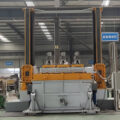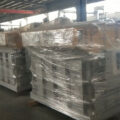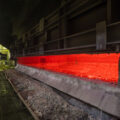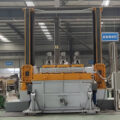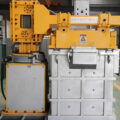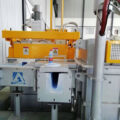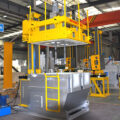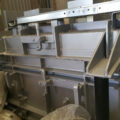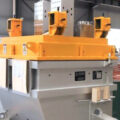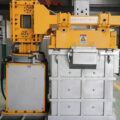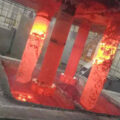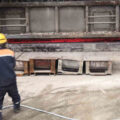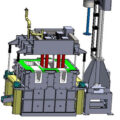The dehydrogenation step is a step for removing hydrogen from molten aluminum in the degassing unit.
Hydrogen is mainly produced from hydrogen contained in the fuel, water, and organic matter attached to aluminum-based metals. If it contains too much hydrogen, pinholes will be produced during the rolling of aluminum ingots, which will reduce the strength of the product. In addition, if there is too much hydrogen, air bubbles will be formed on the surface when the aluminum ingot is rolled. Therefore, hydrogen must be reduced to a level of less than 0.15 ml per 100 g, preferably less than 0.1 ml per 100 g of molten aluminum.
The hydrogen in the dehydrogenation step is removed by fluxing, chlorine purification, online purification, etc., but it is more preferable to use an online degassing device.
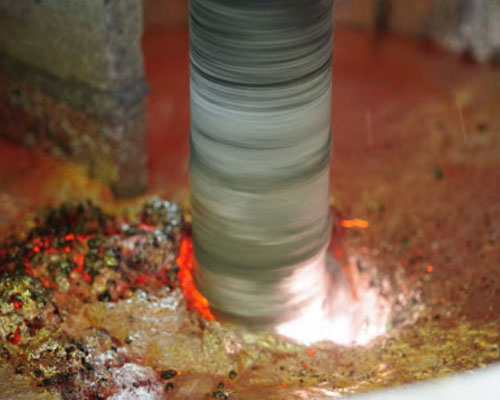
Working Principle of Online Degassing Equipment
The online degassing equipment is installed on the line between the holding furnace and the casting machine, and has two functions of heating and processing. Heating is by means of a heater installed on the lid of the container to preheat the container before filling it with molten aluminum. The operator can set the temperature to maintain the metal temperature between castings and increase the temperature during the casting process. The treatment is to make the molten aluminum from the outlet of the holding furnace contain a certain amount of impurities (hydrogen, alkaline metals, slag inclusions), which are eliminated after online processing.
The treatment process adopted by the online degassing device is based on the principle of gas flotation. The rotor injects and uniformly disperses the process gas (inert gas or a mixture of inert gas and chlorine gas), and the upward flow of tiny bubbles into the melt. Hydrogen is absorbed into the bubbles and eliminated, alkali metals are eliminated through chemical interaction with chlorine gas to form chlorides; slag inclusions are captured by bubbles, and larger slag inclusions collide with bubbles to be captured; smaller slag inclusions pass radially through the bubbles The cross-section is captured, and then the slag inclusion rises with the bubbles to the surface of the melt to form scum.

